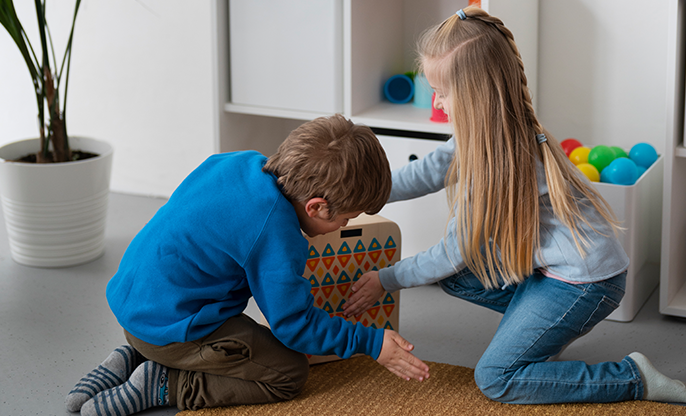
Behaviour and environment
A positive change in the children's environment, improving home comforts and providing necessary items can positively affect their thoughts and behaviour.
What Is My Child's Environment?
The environment means things around them, but it is not limited to the physical environment around them. It is also the timing of things, your requests and instructions, and your responses to the kids' behaviour. While it might feel like each element is separate, it's important to remember that all these pieces work together to influence your child's behaviour.
How to Change the Physical Environment
Changing your child's environment significantly impacts their behaviour and can be done in several ways.
At home:
You can make changes in the physical environment of your child. Remove fragile items from sight; this will ensure safety and space for your child to explore the environment.
Make a safe, quiet space for your child when overwhelmed.
Ensure the screen is off when your child needs to focus on something.
Toys and belongings:
Place the child's toy where they can easily access it. This will prevent unnecessary accidents.
Help your child choose and put away toys they might not want to share with visiting children.
Adjusting the Timing of Things
Do you ever feel like your child isn't listening, no matter what you try? Your child needs a bit more structure, and you can achieve this by adjusting timings.
Routine
Routine creates a sense of security for children. They know what's expected of them and when it's expected of them, so they don't become overwhelmed or uncertain about the future. This can help reduce stress and anxiety, both known to worsen behaviour. You can include the following:
Quiet, calming activities before bedtime.
Getting up earlier reduces pressure and stress in the morning rush for school.
Making Changes to Requests and Instructions
When trying to bring about a positive change in your child's behaviour, a good starting point is to look at how you phrase your requests and instructions.
You can make small changes that help encourage positive behaviour. For example, include "please" in your vocabulary when asking your child to do something.
You can also request kids to do something instead of ordering it. Requests give children a choice and a sense of control, which might make them more cooperative.
For effective influence, try the following:
Aiming for a mix of instructions and requests
Using more requests than instructions
Aligning your requests and instructions per the child's age and skills
By simply making slight changes in your child's environment, you can make a massive difference in how they behave. Start by evaluating the physical environment, changing the timing of tasks and requests, and keeping your instructions clear and concise. Additionally, reward good behaviour and pay attention to the words and the tone of your voice you use.

